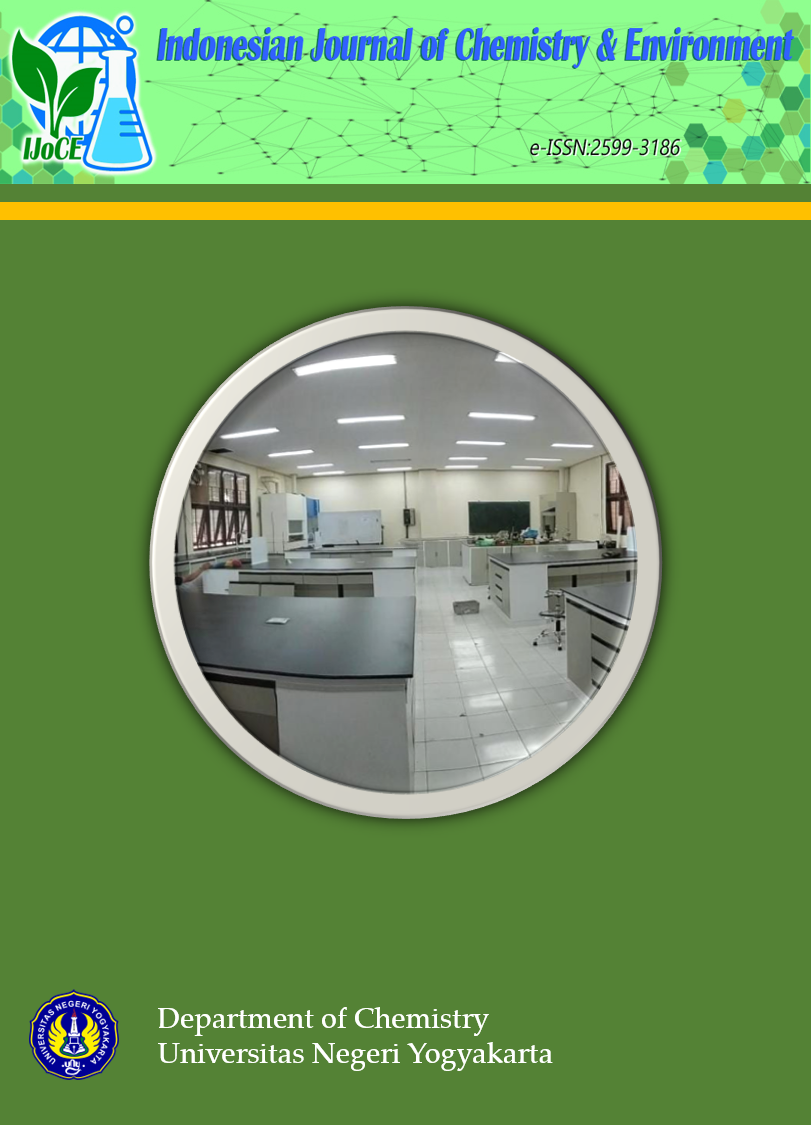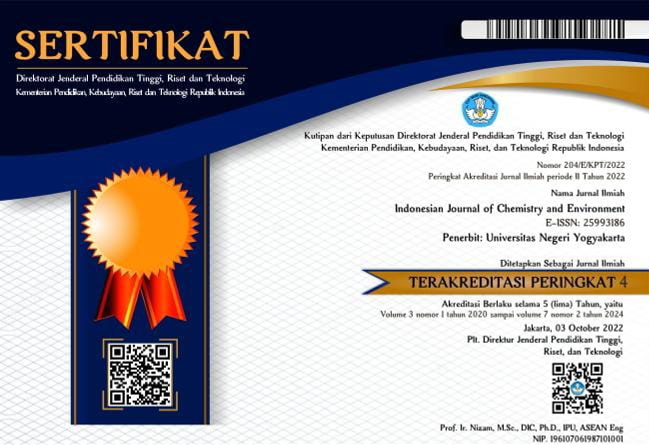Effectiveness of Peanut Shell Activated Carbon as an Adsorbent for Co(II) and Cu(II) Metals in Waste Water Using a Continuous System
DOI:
https://doi.org/10.21831/ijoce.v8i1.88683Abstract
This study aims to investigate the characteristics and performance of physic-chemically activated peanut shell adsorbent in reducing Co(II) and Cu(II) metal concentrations from textile industry wastewater. The activation process involved heating at 450°C and immersion in 0.5 M NaOH. Adsorbent characterization was conducted according to SNI 06-3730-1995 and analyzed using SEM-EDX. Adsorption was carried out in a continuous column system with variations in flow rate, adsorbent mass, and initial concentrations of Co(II) and Cu(II). The unactivated adsorbent had a moisture content of 3.11%, ash content of 5.54%, volatile matter of 64.01%, carbon content of 85.43%, and iodine adsorption of 261.68 mg/g. After activation, these values changed to 3.99%, 7.45%, 53.88%, 74.50%, and 355.32 mg/g, respectively. Optimum adsorption of Co(II) occurred at a flow rate of 0.0358 mL/s and 0.9 g adsorbent mass, while for Cu(II), the optimum was at 0.1282 mL/s and 0.9 g. The optimal volume ratio for both metals was 1:2 (v/v). Adsorption efficiency reached 78.34% for Co(II) and 99.98% for Cu(II), with adsorption capacities of 7.95 mg/g and 9.73 mg/g, respectively.
Downloads
Published
How to Cite
Issue
Section
Citation Check
License
Copyright (c) 2025 Rizka Aulia Hanifah, Susila Kristianingrum

This work is licensed under a Creative Commons Attribution-ShareAlike 4.0 International License.
Authors who publish with this journal agree to the following terms:
- Authors retain copyright under a Creative Commons Attribution–ShareAlike License (CC BY SA) that allows others to share: copy, and redistribute the material in any medium or format, Adapt: remix, transform, and build upon the material, for any purpose, even commercially.
- Authors are able to enter into separate, additional contractual arrangements for the non-exclusive distribution of the journal's published version of the work (e.g., post it to an institutional repository or publish it in a book), with an acknowledgement of its initial publication in this journal.
- Authors are permitted and encouraged to post their work online (e.g., in institutional repositories or on their website) prior to and during the submission process, as it can lead to productive exchanges, as well as earlier and greater citation of published work.










